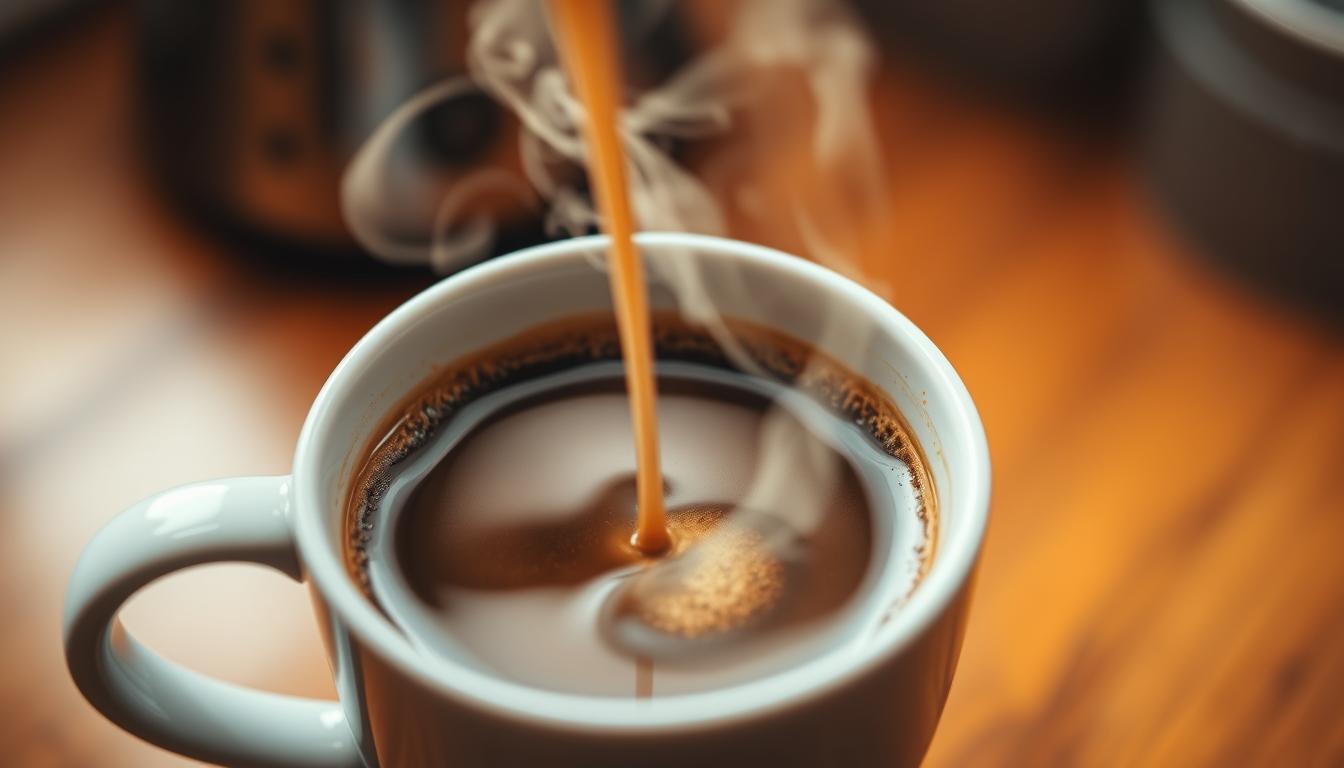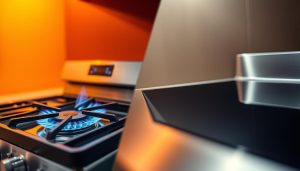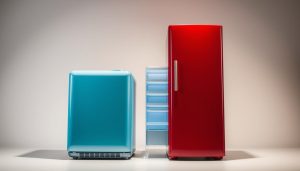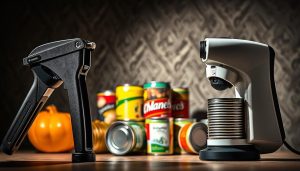Did you know that a 5°F difference in water temperature can alter coffee flavor intensity by up to 40%? This tiny thermal shift determines whether your brew tastes balanced or bitter, vibrant or flat. Mastering heat levels isn’t just a detail—it’s the backbone of crafting exceptional coffee.
Brewing relies on water between 195–205°F to unlock flavors effectively. Go hotter, and harsh compounds dominate. Too cool, and fruity or floral notes stay trapped. It’s a molecular dance: heat accelerates extraction, pulling oils and acids from grounds at varying speeds. Precision ensures every sip reflects the bean’s potential.
Baristas treat temperature control as non-negotiable. Like grind size or brew time, it shapes consistency. Light roasts? They thrive with higher heat to extract delicate nuances. Dark roasts? Slightly cooler water prevents ashy bitterness. Your method matters too—espresso machines need exact settings, while pour-overs demand steady pours.
Think of temperature as your secret tool. Dial it in, and you’ll transform routine brewing into a science. Sourness vanishes. Sweetness emerges. Each cup becomes repeatable, tailored to your taste. Ready to explore how thermal precision elevates your daily ritual?
Key Takeaways
- Heat levels determine how efficiently water draws out flavors and oils from coffee grounds.
- Optimal brewing occurs between 195–205°F—straying outside this range risks bitterness or underdevelopment.
- Molecular interactions between water and coffee change with temperature, affecting extraction speed and balance.
- Professionals prioritize thermal control as critically as grind size for consistent results.
- Different roast levels and origins require tailored temperature adjustments to highlight unique characteristics.
Introduction to Coffee and Temperature Basics
Your cup holds a hidden universe: coffee contains over 1,000 aroma compounds, 40 of which define its core taste profile. These delicate molecules need precise thermal energy to unlock their full potential—too little heat leaves flavors trapped, while excessive temperatures scorch subtle notes.
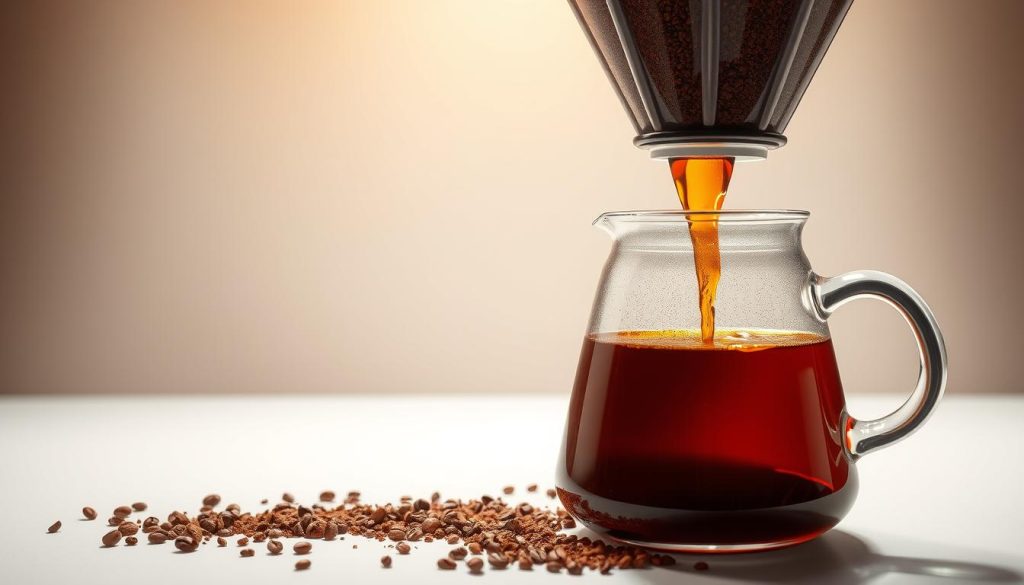
Why Water Heat Dictates Flavor
Heat acts like a molecular key. When water reaches 195°F, its energized particles aggressively bond with coffee grounds, pulling out oils and acids. Cooler water? It moves slower, extracting fewer compounds. This explains why cold brew tastes milder—its low-temperature process skips bitter elements entirely.
The Science Behind Extraction
Ground beans release flavors in stages. Fruity acids emerge first at lower temps, followed by sweeter caramelized sugars. Bitter compounds require intense heat to dissolve. By controlling water temperature, you decide which notes dominate. Your brewing method becomes a flavor filter, selecting desirable traits while leaving harsh elements behind.
Specialty roasters emphasize this balance. Light roasts thrive with hotter water to crack open dense cellular structures, while dark roasts need slightly cooler pours to avoid ashy aftertastes. It’s not just about dissolving coffee—it’s about curating a precise chemical reaction.
The Role of Temperature in Coffee Extraction
Imagine your morning brew transforming from bright citrus notes to rich caramel tones with just a thermometer tweak. Heat doesn’t just extract coffee compounds—it curates their proportions like a master mixer balancing tracks.
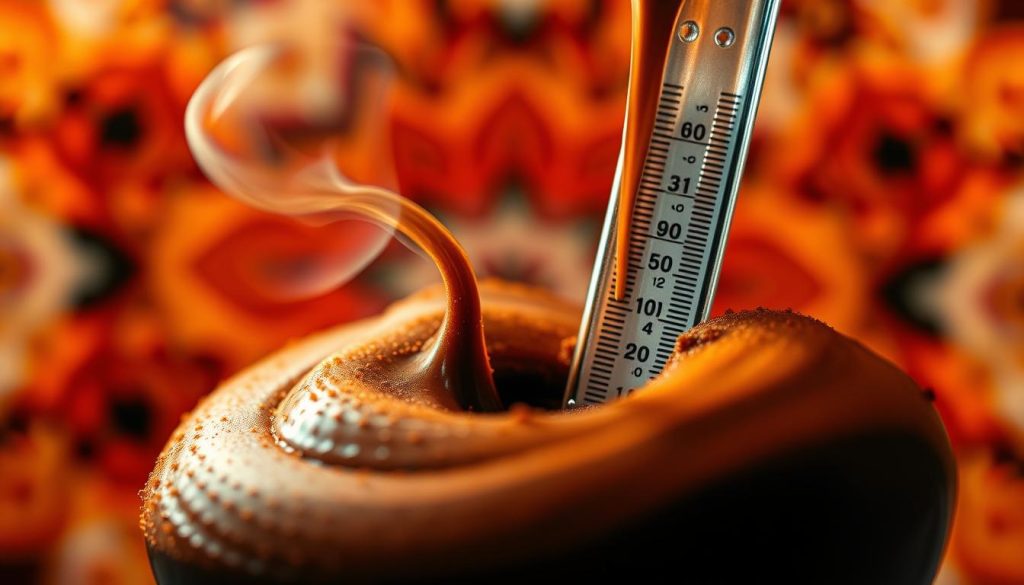
Flavor Alchemy Through Heat Adjustment
At 92°C (197°F), you’ll get a lively cup with sharp acidity and tea-like body—perfect for Ethiopian light roasts. Ramp up to 98°C (208°F), and those floral highs melt into chocolatey depths. Citric acid drops 22% across this range, while bitter quinic acid surges 37%.
Malic acid—the green apple note—hits its minimum at 94°C. This creates a sweet spot for balanced Central American beans. Sucrose extraction peaks here too, giving natural sweetness without harshness. Go hotter, and you trade crispness for syrupy texture.
Yield vs Taste: The Extraction Paradox
Higher temps boost extraction yields, but not all dissolved solids taste good. While 98°C pulls 19.57% versus 18.95% at 92°C, that extra 0.62% contains bitter phenolics. Professional roasters call this “empty extraction”—more quantity, less quality.
Cold brew proves this rule: its low-temperature process extracts just 15-18% yet delivers smooth sweetness. Your ideal brew temperature depends on desired mouthfeel. Want juicy acidity? Stay cool. Crave caramelized depth? Crank the heat—but watch for ashy aftertastes.
Mastering Temperature Control for Espresso Brewing
Espresso’s flavor balance can shift dramatically with just a 2°F temperature change—equivalent to the difference between caramel sweetness and metallic bitterness. This pressurized brewing method amplifies heat’s impact, demanding tighter control than other techniques.
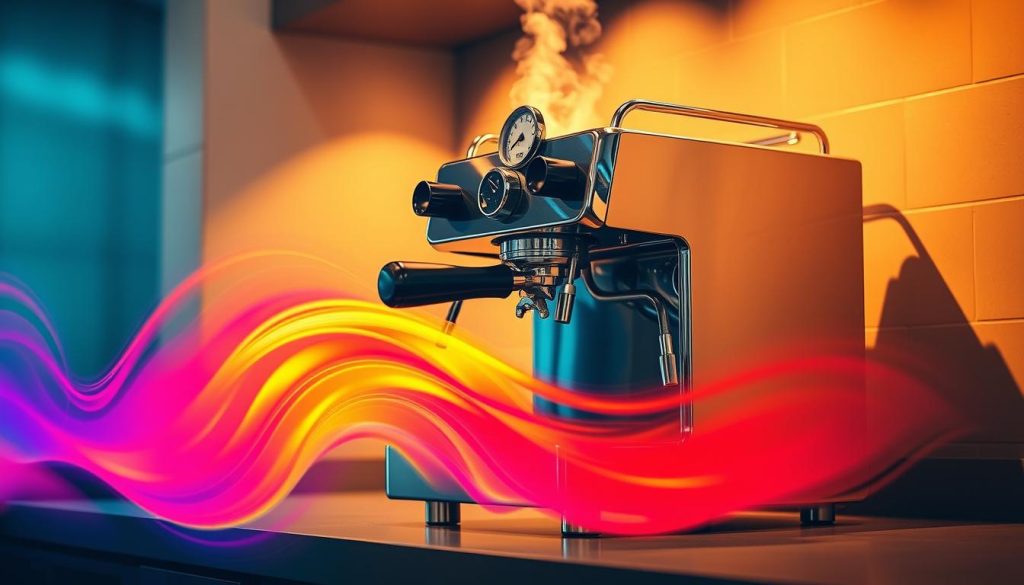
Optimal Temperature Ranges for Brewing
Your espresso machine performs best between 195°F and 205°F. Below this range, water struggles to dissolve coffee solids, creating sour, underdeveloped shots. Exceeding it scorches oils, releasing harsh tannins. Light roasts often need 203–205°F to extract bright acidity, while dark blends shine at 197–200°F to avoid bitterness.
Using Equipment to Maintain Consistent Heat
Modern espresso machines with PID controllers adjust temperatures within ±1°F. These systems counteract heat loss during back-to-back shots, crucial for cafés serving 100+ drinks daily. Home users benefit too—preheating your portafilter for 15 minutes prevents initial temperature drops that cause uneven extraction.
Baristas recommend flushing the group head before pulling shots. This stabilizes the brew chamber and removes residual overheated water. For non-PID machines, use a thermometer to track boiler behavior and adjust grind size accordingly.
Implementing Temperature Adjustments in Your Brewing Routine
Your morning cup’s flavor balance hinges on thermal precision—adjusting just 5°F can shift taste profiles from vibrant to flat. Three variables demand attention: roast characteristics, grind consistency, and environmental conditions. Master these, and you’ll turn unpredictable brews into consistent triumphs.
Adapting to Roast Profiles and Grind Settings
Light roasts often need hotter water (up to 205°F) to break through dense cellular structures. Darker beans? Drop to 195°F to avoid ashy bitterness. Pair this with grind tweaks: finer particles extract faster, so reduce heat slightly to prevent over-extraction. Coarser grounds benefit from higher temperatures to boost solubility.
Notice your grinder warming during use? This increases coffee solubility by 12-15%. Counteract it by lowering brew heat 2-3°F for later shots. Keep a log—track how temperature shifts affect caramelization versus acidity in your cup.
Techniques to Counteract Environmental Factors
At high elevations like Boulder (5,000 ft), water boils at 202°F—4°F lower than in Texas. Compensate by extending brew time 10-15 seconds. Humid climates? Preheat equipment longer to maintain stable thermal conditions.
Cold brewing unlocks sweetness without bitterness: steep grounds in 41-71°F water for 12-24 hours. For hot methods, start with 30-second pre-infusions using cooler liquid (190°F) to gently activate flavors before full extraction.
Conclusion
What separates forgettable coffee from unforgettable cups? Precision heat management holds the answer. Every brewing method thrives within 195–205°F—the sweet spot where water becomes a flavor sculptor rather than a destroyer. Higher heat amplifies caramelized sweetness and bitterness, while cooler pours let fruity acidity sparkle.
Modern espresso machines with PID controllers prove thermal consistency isn’t optional. They transform erratic shots into replicable art. Yet equipment alone won’t suffice—pair temperature tweaks with grind adjustments and roast awareness. Light beans demand hotter brewing; dark roasts need restraint.
Your experiments matter most. Try lowering heat 3°F to highlight Ethiopian beans’ floral notes, or boost it for Colombian sweetness. Track how extraction shifts: longer contact times at lower temps can mimic high-heat effects without harshness.
Mastering this variable turns random results into intentional flavour journeys. You’re not just making coffee—you’re engineering liquid craftsmanship through controlled thermal reactions. Start small, adjust boldly, and let each cup reflect your growing expertise.
